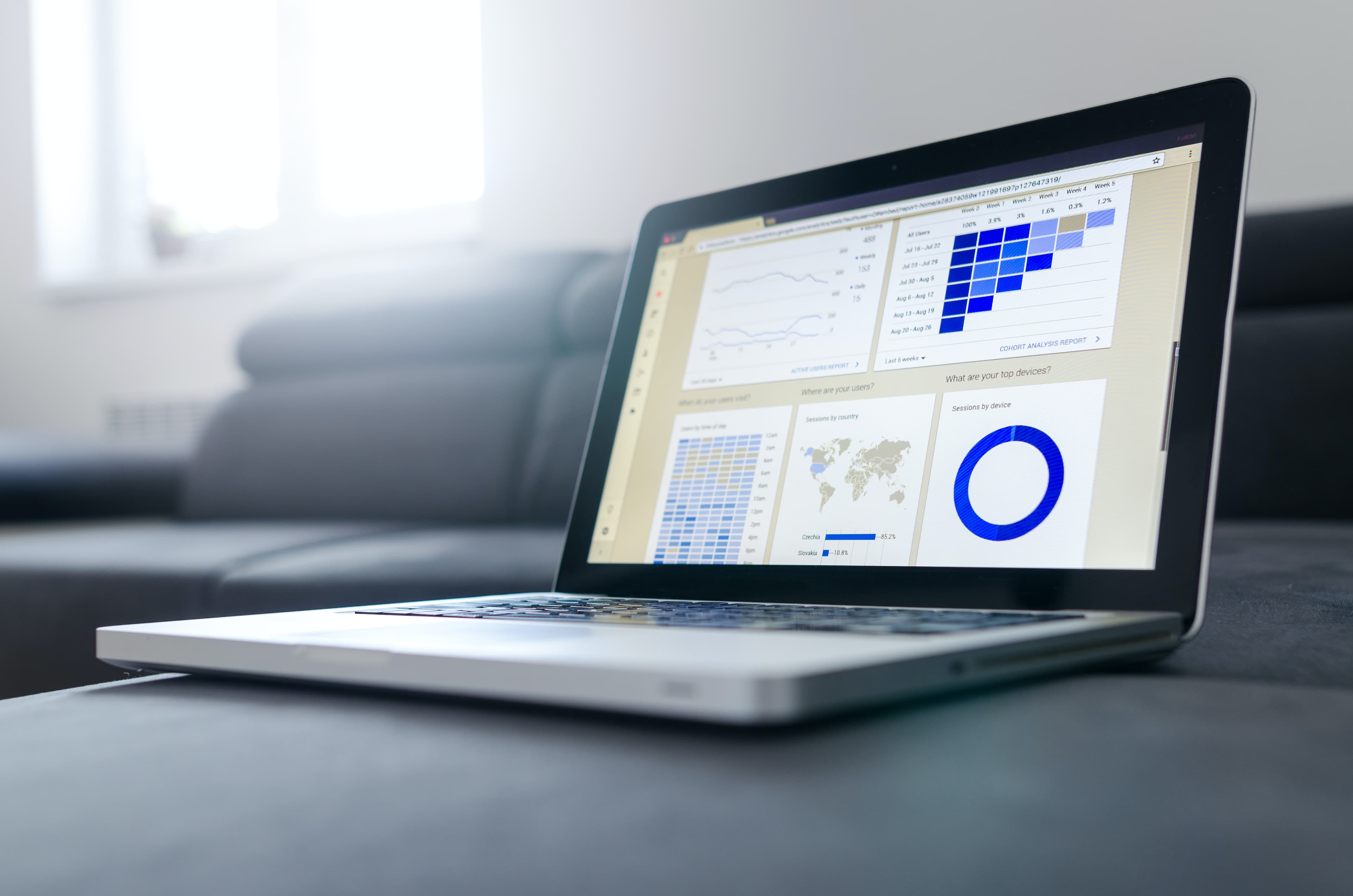
Shopify Analytics: Harnessing Data to Make Informed Business Decisions
Are you a business owner who uses Shopify to run your online store? If so, it's time to start harnessing the power of your data to make informed business decisions. Shopify Analytics is the key to unlocking this potential, and in this article, we're going to explore how to use it to achieve success.
Understanding the Importance of Data in E-commerce
Data is the driving force behind successful e-commerce businesses. In today's digital world, gathering and analyzing data is more important than ever to stay ahead of the competition. By leveraging analytics tools, you can gain valuable insights into your customers' behaviors, preferences, and buying patterns.
However, it's not just about collecting data. It's about understanding what the data is telling you and how you can use it to improve your business. For example, if you notice that a particular product is selling well, you can use that information to create targeted marketing campaigns and promotions to increase sales even further.
The Role of Data in Business Growth
Data is essential for building and sustaining growth in any business. With Shopify Analytics, you can track your progress towards revenue goals and identify areas for improvement. By identifying key performance indicators (KPIs), you can make informed business decisions that drive growth and increase profitability.
One way to use data to drive growth is by analyzing customer feedback. By collecting and analyzing customer feedback, you can identify areas where your business is falling short and make improvements to address those issues. This can lead to increased customer satisfaction and loyalty, which in turn can drive growth and profitability.
Identifying Key Performance Indicators (KPIs)
Some important KPIs include sales revenue, customer acquisition cost, and customer lifetime value. By tracking these metrics, you can determine which areas of your business are performing well and which need improvement. This is critical to making informed decisions that drive growth.
Another important KPI to track is website traffic. By analyzing your website traffic, you can identify which pages are most popular and which pages are causing visitors to leave your site. This can help you make improvements to your website to increase engagement and drive more conversions.
In conclusion, data is essential to the success of any e-commerce business. By collecting and analyzing data, you can gain valuable insights into your customers' behaviors and preferences, identify areas for improvement, and make informed decisions that drive growth and profitability. So, make sure you are leveraging analytics tools to their fullest potential and using data to guide your business strategy.
Getting Started with Shopify Analytics
Shopify Analytics is a powerful tool that can help you gain valuable insights into your e-commerce business. With Shopify Analytics, you can track your store's performance, monitor customer behavior, and identify areas for improvement. In this article, we'll explore some of the key features of Shopify Analytics and show you how to get started.
Setting Up Your Shopify Analytics Dashboard
The first step to harnessing the power of Shopify Analytics is to set up your dashboard. The dashboard is the central hub where you can view all of your store's key metrics, such as sales, traffic, and conversion rates. It's important to customize your dashboard to fit your specific business needs, so you can quickly and easily access the data that's most important to you.
When setting up your dashboard, you should consider which metrics are most relevant to your business goals. For example, if you're focused on increasing sales, you may want to prioritize metrics such as conversion rates and average order value. On the other hand, if you're focused on improving customer satisfaction, you may want to prioritize metrics such as customer retention and satisfaction scores.
Once you've set up your dashboard, you can use it to monitor your store's performance on a regular basis. This will help you identify any areas that need attention, such as low conversion rates or high bounce rates, and take action to improve them.
Integrating Third-Party Analytics Tools
Shopify Analytics also integrates with a variety of third-party analytics tools, such as Google Analytics. By integrating these tools, you can gain even deeper insights into your customers' behavior and preferences. This is essential for optimizing your e-commerce strategy and driving growth.
When integrating third-party analytics tools, it's important to choose the tools that are most relevant to your business goals. For example, if you're focused on improving your SEO, you may want to integrate tools such as SEMrush or Ahrefs. On the other hand, if you're focused on improving your social media marketing, you may want to integrate tools such as Hootsuite or Buffer.
By integrating these tools, you can gain a more holistic view of your e-commerce business and make more informed decisions about your marketing and sales strategies.
In conclusion, Shopify Analytics is a powerful tool that can help you take your e-commerce business to the next level. By setting up your dashboard and integrating third-party analytics tools, you can gain valuable insights into your customers' behavior and preferences, and optimize your marketing and sales strategies for growth.
Analyzing Sales and Customer Data
Running an e-commerce business can be challenging, but with the right tools and strategies, you can achieve success. One of the most important tools for any e-commerce business is analytics. By analyzing your sales and customer data, you can gain valuable insights into your business and make informed decisions that can help you grow and thrive.
Tracking Sales Performance
One of the most important aspects of Shopify Analytics is tracking your sales performance. You can track sales revenue, number of orders, and average order value, among other metrics. By analyzing this data, you can identify trends and patterns that can guide your business decisions.
For example, if you notice that sales revenue is increasing steadily, you might want to consider expanding your product line or investing in marketing to capitalize on this growth. On the other hand, if you see a decline in sales, you may need to reevaluate your pricing strategy or make changes to your product offerings.
Identifying Customer Segments and Behaviors
Understanding your customer segments and behaviors is critical to creating targeted marketing campaigns and improving the overall customer experience. With Shopify Analytics, you can analyze customer data, such as demographics, location, and order history, to create personalized experiences that drive loyalty and retention.
For instance, if you notice that a large percentage of your customers are located in a particular region, you might want to create targeted marketing campaigns that are tailored to that region. Alternatively, if you notice that a particular product is popular among a certain demographic, you might want to create more products that cater to that demographic.
Monitoring Cart Abandonment Rates
Cart abandonment can be a major problem for e-commerce businesses. With Shopify Analytics, you can track your cart abandonment rates and identify the factors that are contributing to it. This can help you optimize your checkout process and reduce your cart abandonment rate.
For instance, if you notice that a large percentage of customers are abandoning their carts during the payment process, you might want to consider offering more payment options or simplifying the payment process. Alternatively, if you notice that customers are abandoning their carts because of high shipping costs, you might want to offer free shipping or reduce your shipping rates.
Overall, Shopify Analytics is a powerful tool that can help you gain valuable insights into your business and make informed decisions that can help you grow and succeed. By tracking your sales performance, identifying customer segments and behaviors, and monitoring cart abandonment rates, you can optimize your business and improve the customer experience.
Evaluating Marketing and Advertising Efforts
Marketing and advertising are essential components of any successful business strategy. However, simply investing in these efforts is not enough. It is crucial to evaluate the performance of your campaigns to optimize your strategy and drive growth.
Measuring Campaign Performance
Measuring the performance of your marketing and advertising campaigns is critical to understanding which campaigns are generating the most revenue. With Shopify Analytics, you can track the ROI of your campaigns and identify which ones are performing the best.
But how do you measure the success of your campaigns? One way is to track the number of clicks your ads receive. However, clicks don't always translate to sales. That's why it's important to track the conversion rate of your campaigns as well. Conversion rate is the percentage of visitors who complete a desired action, such as making a purchase. By tracking both clicks and conversions, you can get a more accurate picture of your campaign performance.
Analyzing Traffic Sources and Referrals
Understanding where your traffic is coming from and which referrals are driving the most revenue is essential for optimizing your marketing strategy. With Shopify Analytics, you can track your traffic sources and referrals to identify the ones that are driving the most sales.
But it's not just about tracking the sources of your traffic. You also need to analyze the behavior of visitors from each source. For example, visitors from social media may spend more time on your site than visitors from search engines. By understanding these differences, you can tailor your marketing strategy to better target each traffic source.
Optimizing Conversion Rates
Conversion rate optimization is the process of improving the percentage of visitors to your website who complete a desired action, such as making a purchase. With Shopify Analytics, you can track your conversion rates and identify areas for improvement. This can help you increase your revenue and drive growth.
One way to optimize your conversion rates is to analyze the behavior of visitors who did not complete a desired action. For example, if visitors are abandoning their shopping carts, you may need to simplify your checkout process or offer incentives to complete the purchase. By identifying and addressing these barriers, you can improve your conversion rates and drive more sales.
Overall, evaluating the performance of your marketing and advertising efforts is critical to optimizing your strategy and driving growth. With Shopify Analytics, you have the tools you need to track your campaigns, analyze your traffic sources, and optimize your conversion rates.
Leveraging Product and Inventory Insights
Running a successful e-commerce business requires more than just setting up a website and adding products to your online store. You need to have a deep understanding of your inventory and how it is performing in the market. This is where Shopify Analytics comes in. This powerful tool provides you with valuable insights into your product and inventory data, allowing you to make informed decisions that can drive growth and increase profitability.
Identifying Top-Selling Products
One of the most important things you can do as an e-commerce business owner is to identify your top-selling products. These are the products that are generating the most revenue for your business. With Shopify Analytics, you can easily track sales data by product and identify which ones are your top-sellers. Armed with this information, you can make informed decisions about inventory management and product development.
For example, let's say you sell clothing on your e-commerce store. By analyzing your sales data with Shopify Analytics, you may discover that your top-selling products are t-shirts and jeans. Armed with this knowledge, you can adjust your inventory levels to ensure that you always have enough t-shirts and jeans in stock to meet demand. You can also focus on developing new products in these categories to drive even more revenue.
Managing Inventory Levels and Trends
Managing your inventory levels and trends is critical to maintaining profitability and avoiding stockouts. With Shopify Analytics, you can track inventory data and identify trends that can guide your purchasing decisions. For example, you may notice that certain products sell better at certain times of the year. Armed with this knowledge, you can adjust your inventory levels to ensure that you have enough stock to meet demand during peak seasons.
Additionally, you can use Shopify Analytics to identify slow-moving products. These are products that are not generating as much revenue as you had hoped. By identifying these products, you can make informed decisions about whether to continue carrying them or to remove them from your inventory altogether.
Analyzing Product Performance by Category
Another critical aspect of Shopify Analytics is analyzing product performance by category. By analyzing sales data by category, you can identify which categories are driving the most revenue and adjust your strategy accordingly. For example, you may discover that your clothing store is generating the most revenue from the women's clothing category. Armed with this knowledge, you can focus on developing new products in this category to drive even more revenue.
Furthermore, analyzing product performance by category can help you optimize your product selection. You may discover that certain categories are not performing as well as you had hoped. Armed with this knowledge, you can adjust your inventory levels or remove these products from your online store altogether.
In conclusion, Shopify Analytics is a powerful tool for e-commerce businesses. By harnessing the power of your data, you can make informed business decisions that drive growth and increase profitability. By following the tips and strategies outlined in this article, you can take your e-commerce business to the next level. So, start leveraging the power of Shopify Analytics today and watch your business thrive!
Nitro Logistics Team
Logistics Expert
The Nitro Logistics team brings together decades of experience in logistics, fulfillment, and supply chain optimization.
Stay Updated
Get the latest insights in logistics and fulfillment delivered to your inbox.


